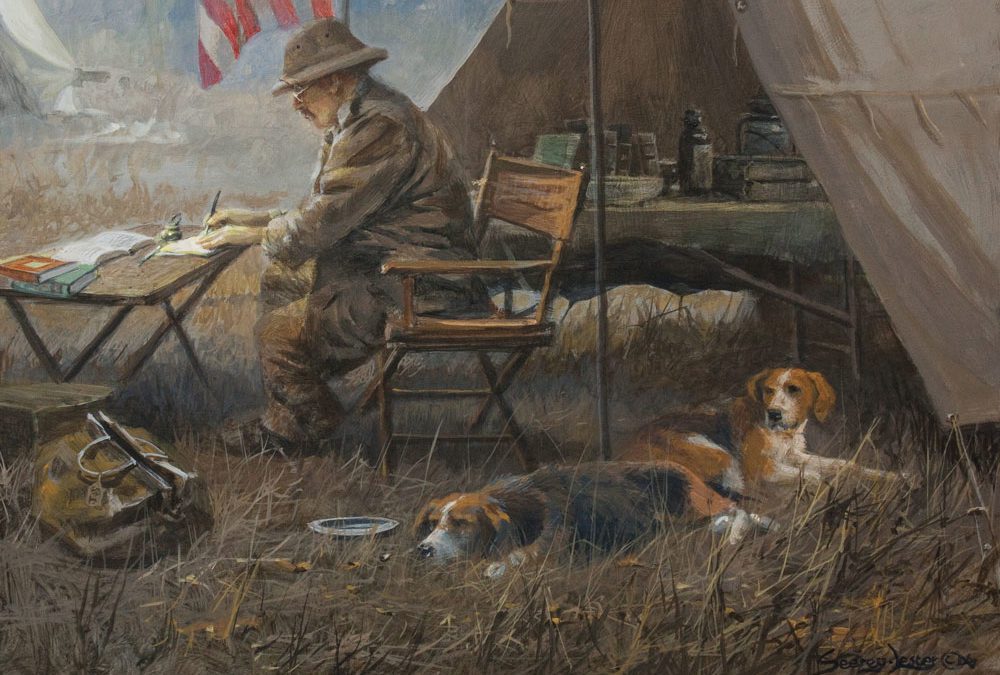Theodore Roosevelt’s historic safari through British East Africa was more than a year in the planning and took nearly a year to complete. It became the most significant expedition ever taken on the Dark Continent.
TR’s safari collected more specimens and identified and named more species for the Smithsonian and other US museums than any previous expedition. The safari not only gathered previously unknown flora and fauna, it opened up a whole world of adventure for Americans. Prior to this monumental undertaking, few people from America and other counties had been exposed to the beauty and savagery of the African continent.
TR and Kermit did a wonderful job of hunting the animals, but if it hadn’t been for the other members of the safari, such as naturalists Dr. Edgar A. Mearns and Edmund Heller, and zoologist J. Alden Loring, they would not have achieved what they set out to do.
Before the end of his presidency, TR was already planning his epic journey and wasted no time in inviting Mearns, Heller, and Loring to accompany him. The museums were pleased to have these stellar scientists go along, and those concerned for the health of the safari participants were pleased that Dr. Mearns had been invited. A retired Army surgeon as well as an experienced field naturalist, his many talents were used throughout the safari.
Research and the pursuit of knowledge were uppermost in TR’s mind. He even kept most of the bullets from the animals that had been shot, so he could see the kind of damage they had inflicted on bone and muscle tissue. But it was the journals of the naturalists and zoologists that would prove to be one of the most important results of the expedition.
With only a few exceptions, TR’s party hunted most days. When they returned to camp with their trophies, Heller and Mearns would get busy skinning and preparing the hides for transportation back to the US.
Heller had trained his native skinners well, though it took a lot of hands-on supervision on his part. Each tribesman had a different attitude toward the job at hand and most of them could not be trusted to work on their own. As a result, Heller often worked late into the night, with only the illumination of fuel lamps as he prepared the skins.
Elephant and rhino hides couldn’t be left for any length of time and were difficult to preserve. Sometimes a messenger would be sent to bring Heller and his skinners to take care of a fallen beast in the field.
The preserved skins had to be transported as quickly as possible to Nairobi. Moving carcasses, meat, and skins back to camp also had to be done quickly. Lions were the main threat along with hyenas, which have been known to travel as far as 30 miles to devour a kill.
TR had no motor vehicles, only oxcarts and mules. So each time they killed a large animal, they risked an attack from predators and scavengers. Normally, TR would leave a couple of natives with the carcass to protect it from lions.
While camped at Kilimakiu Mountain, the safari worked with native Wakambas, who Heller found to be most adept at skinning. The natives filed their teeth to a point and enjoyed eating raw meat. They were more than happy to skin the animals as they could eat while they worked.
On one hunt, TR shot an eland, then sent a messenger back to camp to get Heller. About that time a Wakamba man came running up to the hunters to say that a rhino had been sighted on a hillside some three-quarters of a mile away. He’d left another of his village to keep an eye on the animal. The man’s initiative impressed TR, who quickly headed out after the rhino and enjoyed an exciting hunt.
Heller, with the help of Mearns, was busy that day, going back and forth, skinning and preserving everything from elands to giraffes and rhinos, while at the same time, making sure any lions were kept at bay.
Heller and Mearns, along with Loring, worked tirelessly every day, desperately trying to keep up with the exploits of TR, Kermit, and the many other hunters who joined the safari from time to time.
It must have been a tough decision when in September of 1909, halfway through the safari, TR allowed Dr. Mearns and Loring to leave his party temporarily so they could complete a biological survey of Mount Kenya. That left Heller to take care of all the skinning and hide preservation for an entire month.
For Mearns and Loring, the side trip was spectacular. They collected an amazing 1,112 birds of 210 species, 1,320 mammals, and 771 reptiles, not to mention an incredible array of plants.
Meanwhile, Heller was helping to complete a stunning collection of trophies. In addition to the Mount Kenya venture, the safari collected more than 160 different species, including lion, leopard, black and white rhino, elephant, Cape buffalo, giraffe, and cheetah. Many of these are now housed or can be viewed at the Smithsonian in Washington, DC and the Museum of Natural History in New York.
The hunters also brought back much photographic evidence of their safari that, when published, brought to life the experiences of the safari for posterity.

